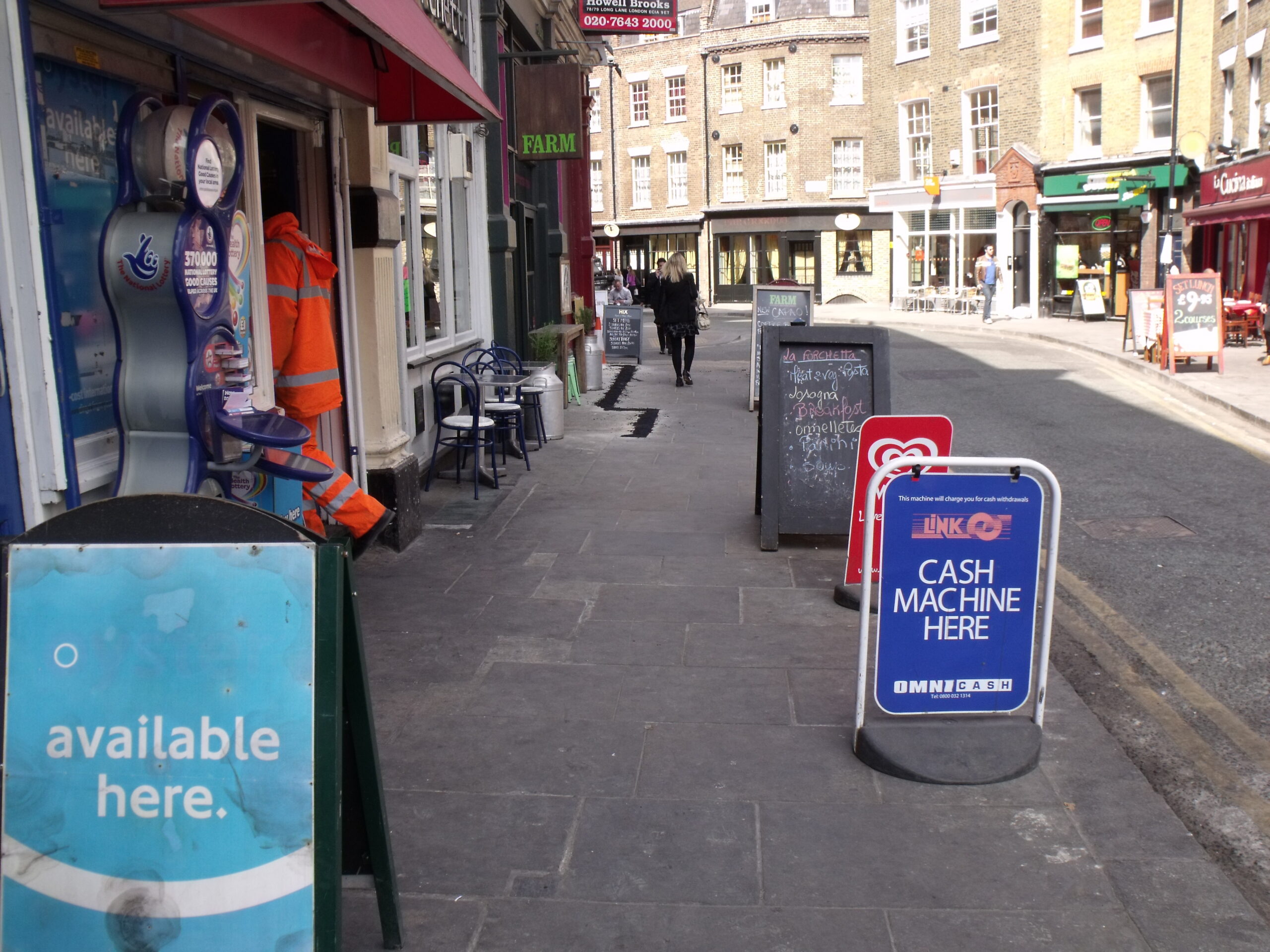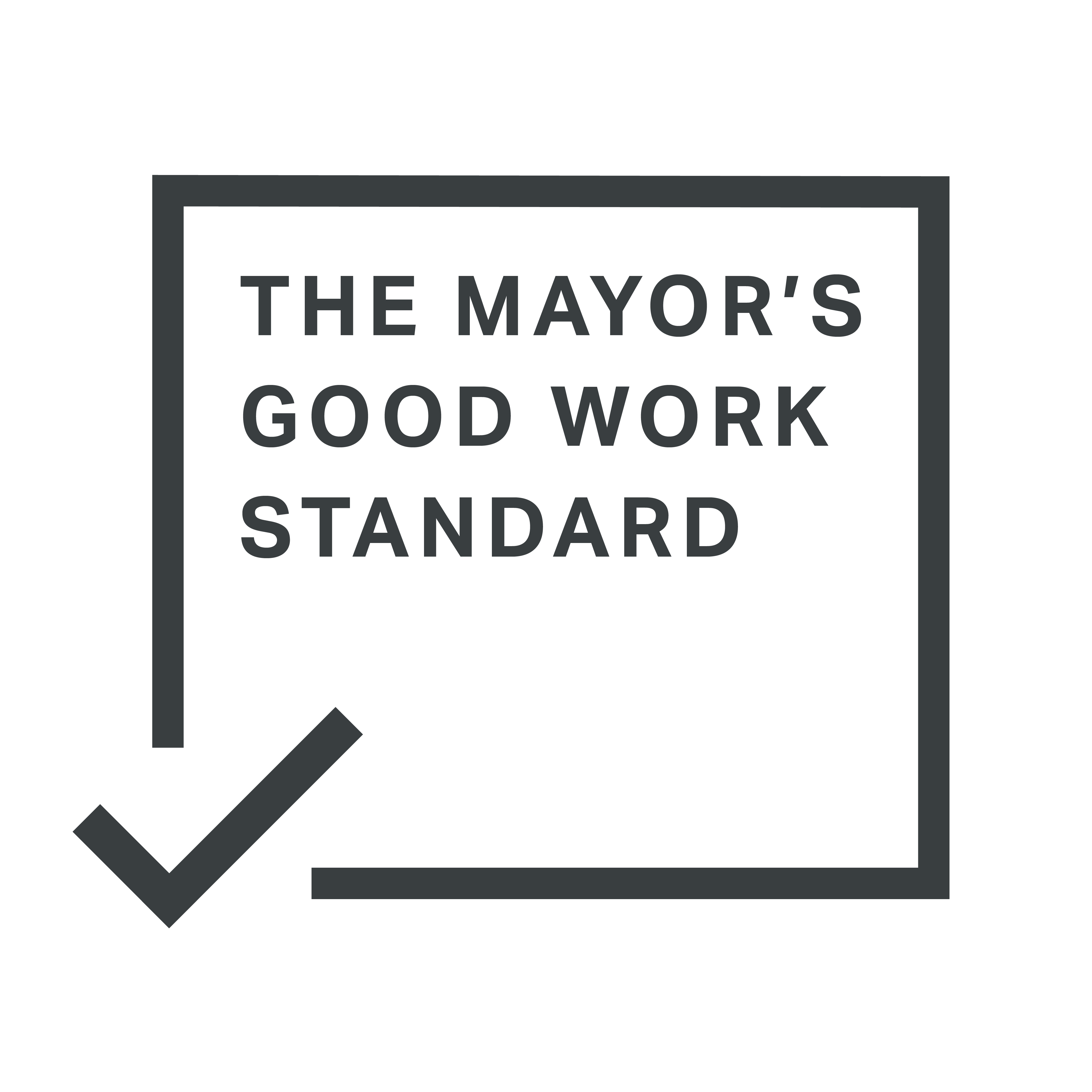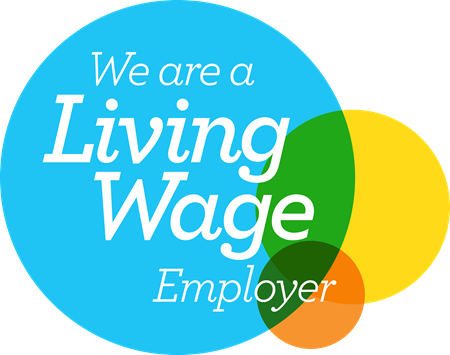Who is responsible for London’s roads and streets?
The motorways in London are maintained and managed by National Highways. You may recognise these by their blue signs; however they are outside of our remit.
Transport for London (TfL) is responsible for the rest of London’s major roads, known as red routes, as well as the Central London congestion charging zone, the Ultra Low Emissions Zone (ULEZ) and all of London’s traffic lights.
The 33 London borough councils, including the City of London Corporation, are in charge of the local roads in their areas. This includes both their construction and maintenance, and the management of traffic (parking, speed limits, etc.) on them. You can find more information about how to make your voice heard by reading our handy guide.
How to recognise a red route
You can identify red routes by the red “no stopping” lines and signs along them. You can find maps of them on TfL’s website.
Highway obstructions
It is against the law to obstruct public roads (which are known in law as highways, and include the adjacent pavements, known as footways). It is the duty of the relevant authority to keep the highways clear. But there are varying interpretations of this law, and many authorities do allow some obstructions to be placed on footways. Where this happens, it should be subject to an “equalities impact statement” to ensure that the needs of vulnerable users are protected.
Bus stops
TfL can install bus stops on any of London’s roads – but only where it is safe to do so. They work with the London borough councils to provide clearway markings in order to control parking at stops.
Making complaints
Road infrastructure, traffic management and parking rules
Suggestions and complaints about a road’s infrastructure and how a road is used (i.e. its physical condition or traffic signs) should be made directly to the appropriate highway or traffic authority, TfL if it is a red route and the relevant borough council in any other case. Any matter relating to traffic lights should also be referred to TfL.
Penalty charge notices relating to parking, moving traffic, bus lanes, congestion charging, low emission zone and littering
If you have been issued with a penalty charge notice for violating any traffic management rule, you should follow the procedure set out on it. London Tribunals act independently and consider appeals against these notices. They specifically support the Environment and Traffic Adjudicators and the Road User Charging Adjudicators.
However, London TravelWatch does not normally become involved with cases of this kind.
Obstructions of the highway (and footways)
If an advertising board or anything else is obstructing the footway, or if you believe that street trading is taking place without a licence, then a complaint should be made to the appropriate highway authority: TfL if it is on a Red route, or the local borough council in any other case.
Street cleaning
The London boroughs are responsible for cleaning all of London’s streets, including Red routes. All complaints should be made to the relevant council.
Siting of bus stops
If you want to discuss the location of a bus stop or shelter, you should contact TfL with your suggestion. Having the local borough council’s support will strengthen your case.
Making appeals
Appealing about councils
If you are dissatisfied with a council’s response to your complaint, there will be an appeals procedure on its website. If this does not lead to an outcome which is acceptable to you, you can then appeal to the Local Government Ombudsman.
Appealing about TfL
If you are dissatisfied with TfL’s response to your complaint, you can ask London TravelWatch to review your case.
But please note that London TravelWatch will only consider matters from the point of view of the passenger. For any other reason you should contact the Local Government Ombudsman.




